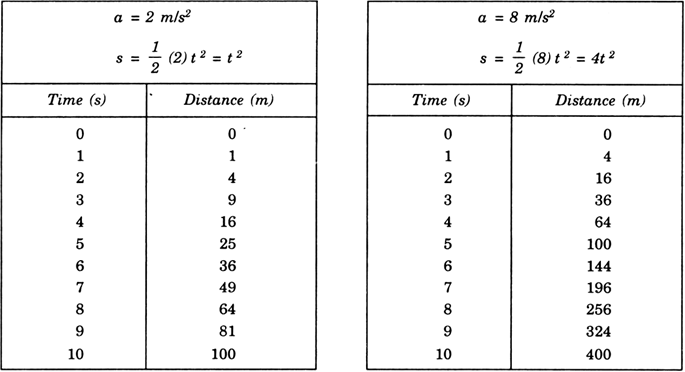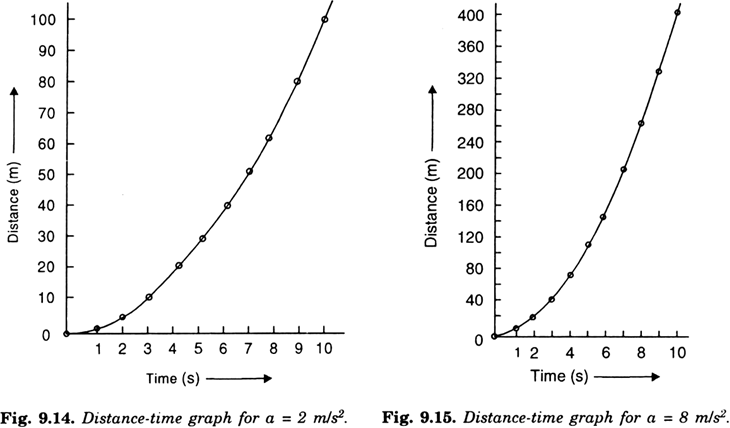Plot the distance-time graphs for an object which starts from rest, in the following cases:
(a) a = 2 m/s2; and (b) a = 8 m/s2.
A table of distance-time graph is made in both the cases.
In both cases,
Initial velocity, u = 0


The distance-time graph is as shown in fig. 9.14 and 9.15:



